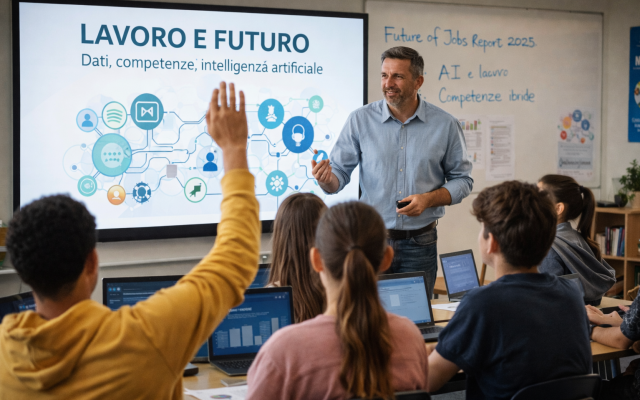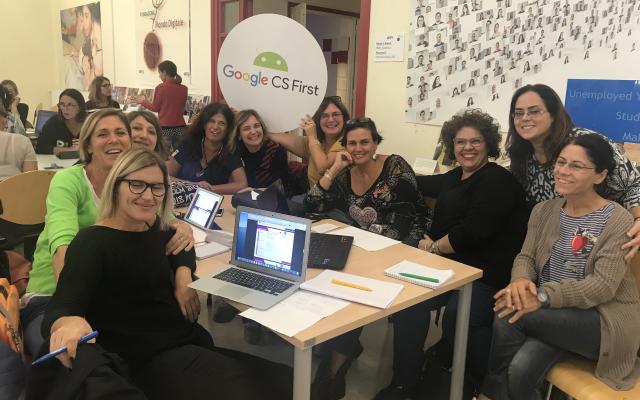CS First Platform applications for students with special needs
After the summer break, we return to address Project CS First and listen to the opinions of users. Today, Prof. Maria Rosa D’Amico, interviewed by Onelia Onorati, shares an idea that she would like to experiment in the new school year: using the Google platform to develop “social stories.” These are short, organised stories that aim to explain complex social situations in a simple and clear manner, helping children to comprehend the world that surrounds them and develop social and behavioural activities. The stories are also very useful to help students on the spectrum to develop social comprehension. Maria Rosa D’Amico teaches at the Istituto comprensivo Giovanni XXIII in Paceco, in the province of Trapani. The school is directed by Barbara Mineo.
How did you hear about CS First?
I have been at the Istituto Paceco for four years, first teaching technology for two years and then as a support teacher, always in first-degree secondary school. I participated in the CS First course from the first year. My initial reaction to the tool was confusion as it is a very different and innovative platform compared to traditional unidirectional teaching platforms. However, participating in such an engrossing educational lab was an excellent way to easily learn how to use the tool. We were “in the situation” as the coach asked us to replicate what he was explaining.
Can you think of any specific projects for which CS First would be perfect?
I was not able to use the platform when I taught technology because of the lockdown, but I’m sure it could be used for many things. It is excellent for storytelling and to present issues transversally, except perhaps for technical drawing. We could consider creating animated stories on regulations, at different times and in different places.
What do you think of the platform for daily teaching?
I’m certain it works. In particular, I think it would be useful to teach students how to use the platform and then allow them to work on it at home. In fact, homework allows them to re-elaborate the stimuli they receive in class at their own time and pace. This allows them to create and transfer the knowledge they have acquired as a group to the class.
As a support teacher, what do you think about the platform’s inclusive potential?
I experimented with the platform together with the math professor, even this morning. Students are naturally drawn to the platform if they are good at videogames, especially if they have fragilities. Students often intuitively discover new options that I was not even aware of. Once the various commands have been grasped, it’s fun to experiment and work by trial and error. It’s an environment that allows control. Situations can be manipulated, and it’s truly appreciated by students with fragilities.
Can you think about any specific projects that could be implemented on the platform to help students with fragilities to exploit their skills?
Social stories, no doubt! This is a particular type of storytelling in which content is designed based on the civic education behaviour or relative to specific disabilities. Students with behavioural disorders can work on social stories addressing individual educational rules. These rules are then interiorized and become a way of understanding and replicating positive behavioural models. I hope, during the course of the year, to conduct this activity, laying the foundation for similar projects. I also think, as a support teacher, that transversal storytelling would help my students.




